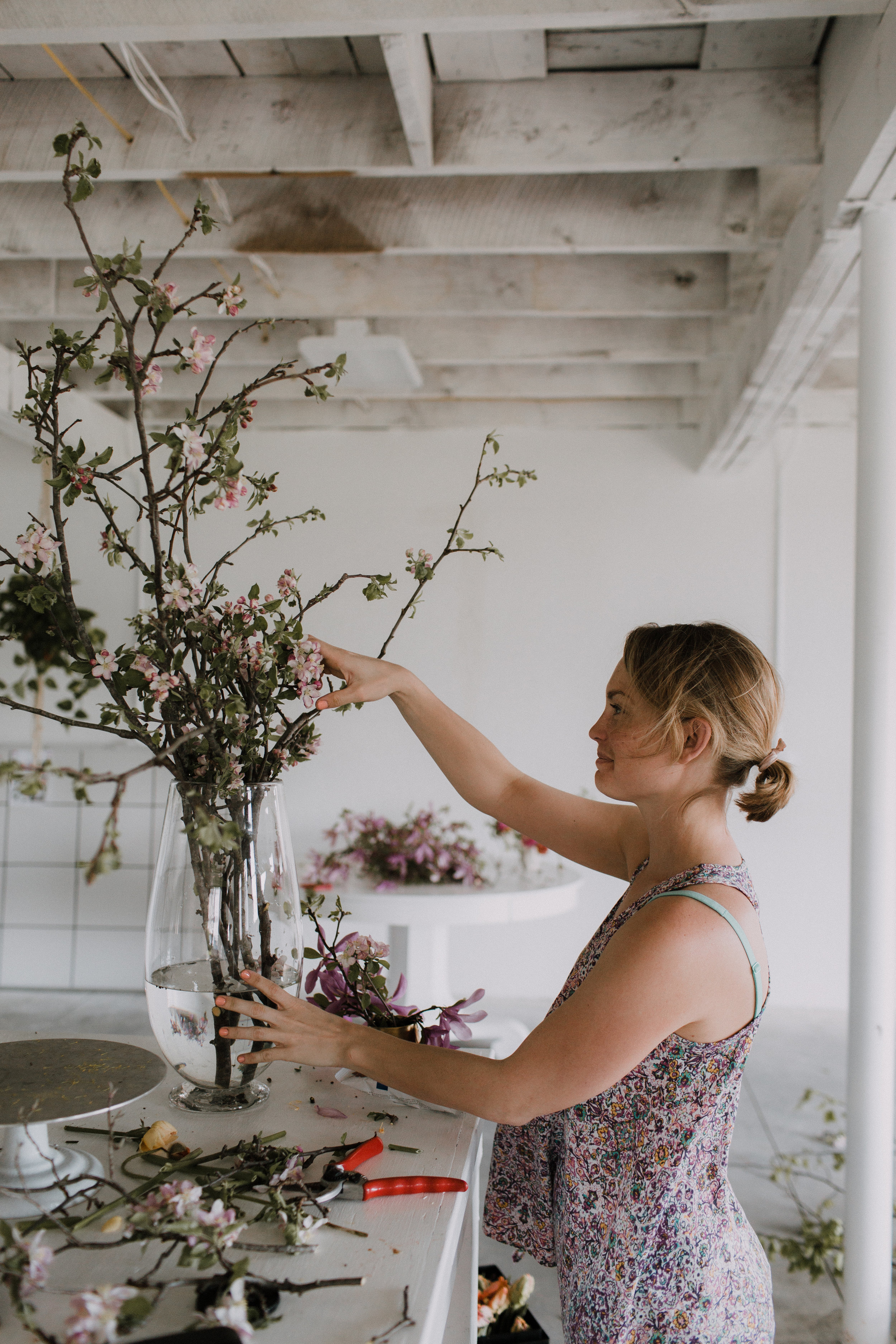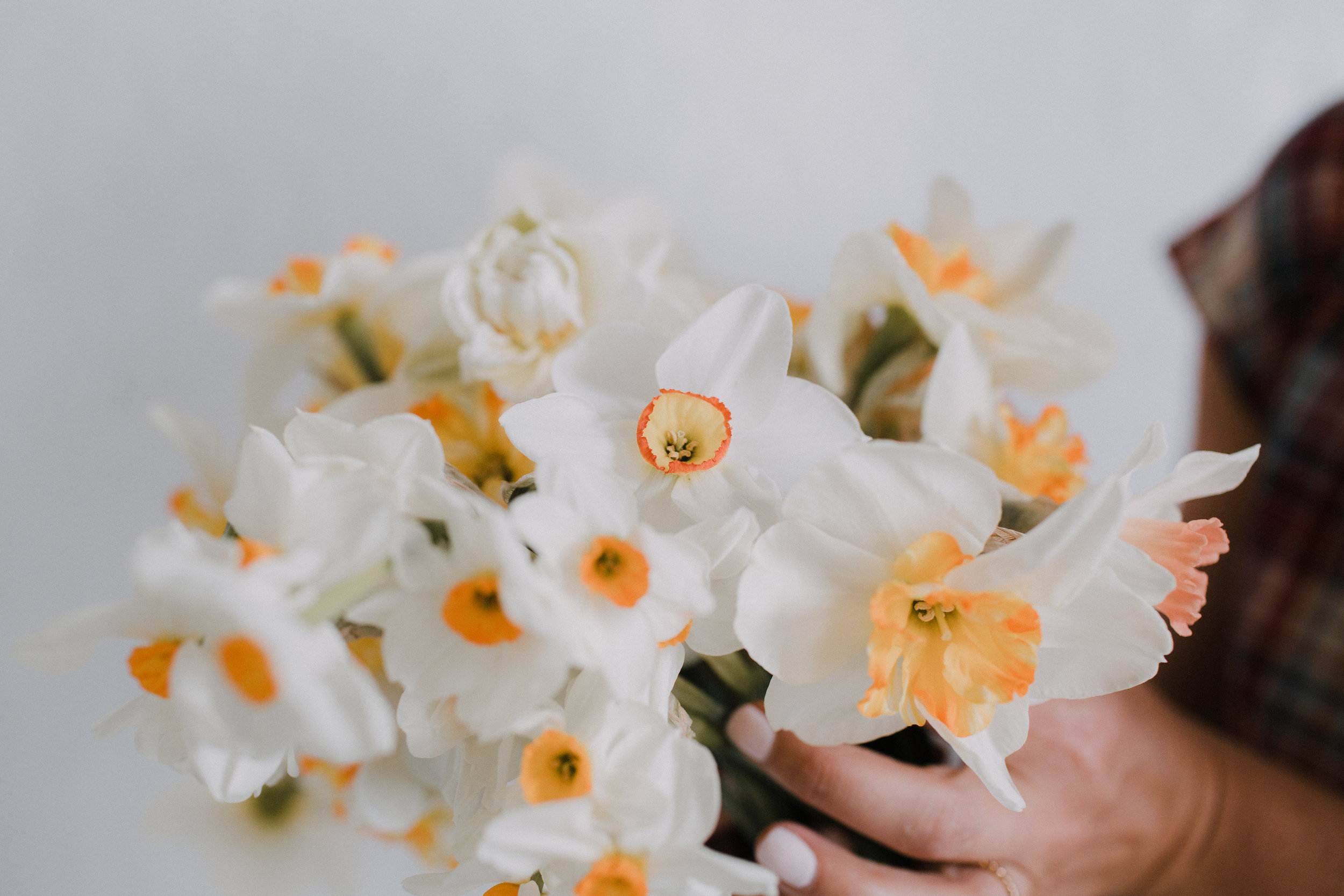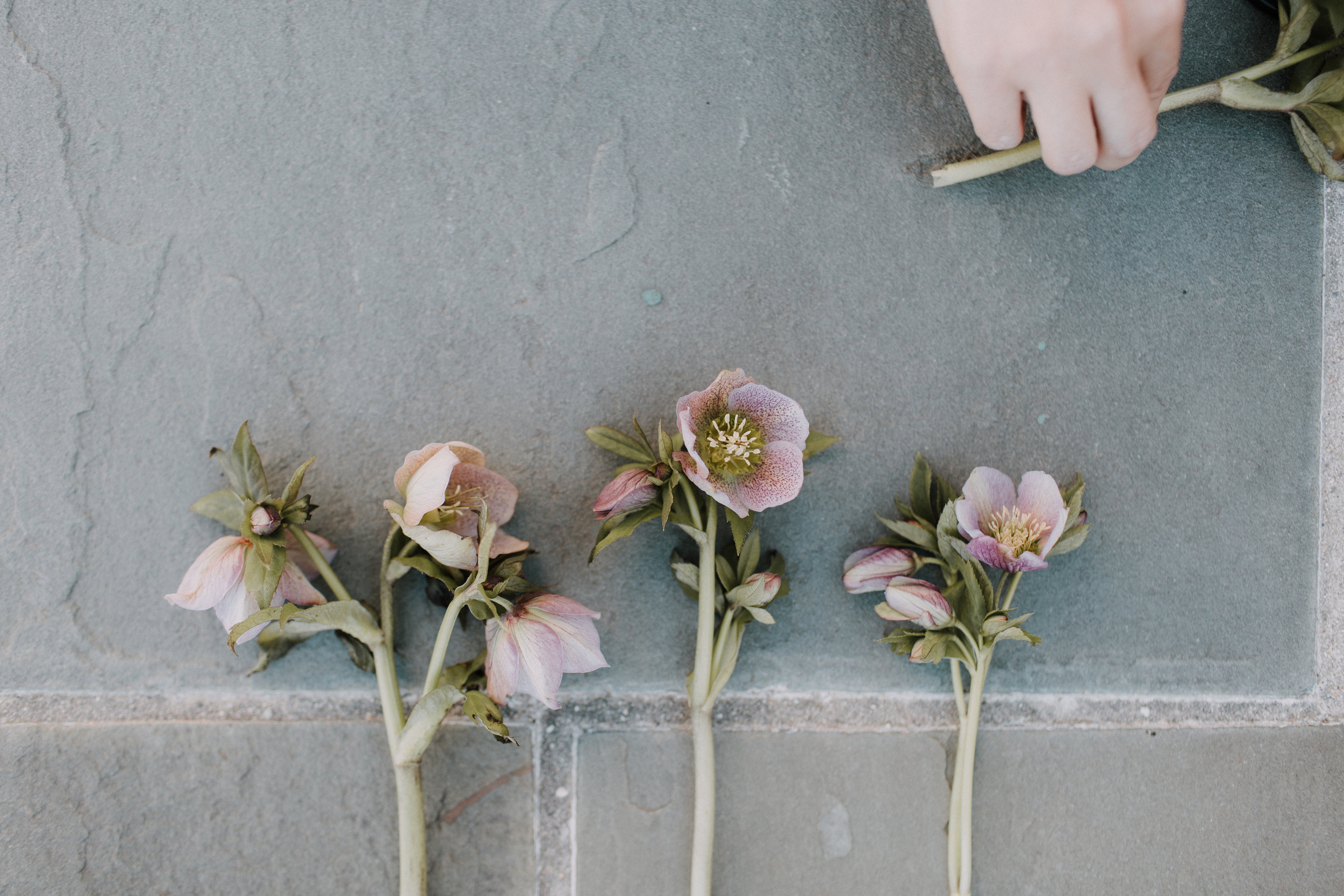Botanical Name: Malus pumila
Blooms Locally: Mid-Late April, Early May
Flower Meaning: "Heady Love, Peace, Sensuality, and Fertility"
One of the most cultivated fruit trees in the world, apple trees originated in Central Asia and were brought to America by early European settlers. Apple trees are now a staple of the American landscape and their fruit is a staple of the American diet. These trees thrive here in Maryland, and while the fall harvest is often a ubiquitous time for these trees, we are particularly found of their spring blossoms. They typically bloom in shades of pale pink to white. In order to successfully pollinate apple trees, you must plant at least two trees of different varieties in close proximity that flower at the same time.
Apple blossoms (and trees) were honored by the ancient Celts as a symbol of love, and they would adorn their bedrooms with these blossoms to entice a romantic evening. The apple blossom is also symbolic of long life, and "it stands for the concept of life continuing, even after we endure a 'death' during the winter of our lives."
We love using these blossoms in spring arrangements. Their 5-petal blooms grow in gorgeous clusters on the the large, arching branches and their subtle pink tone is a lovely accent in any setting. Do you have an apple tree in your yard? Have you ever used apple blossom cuttings in an arrangement?




























